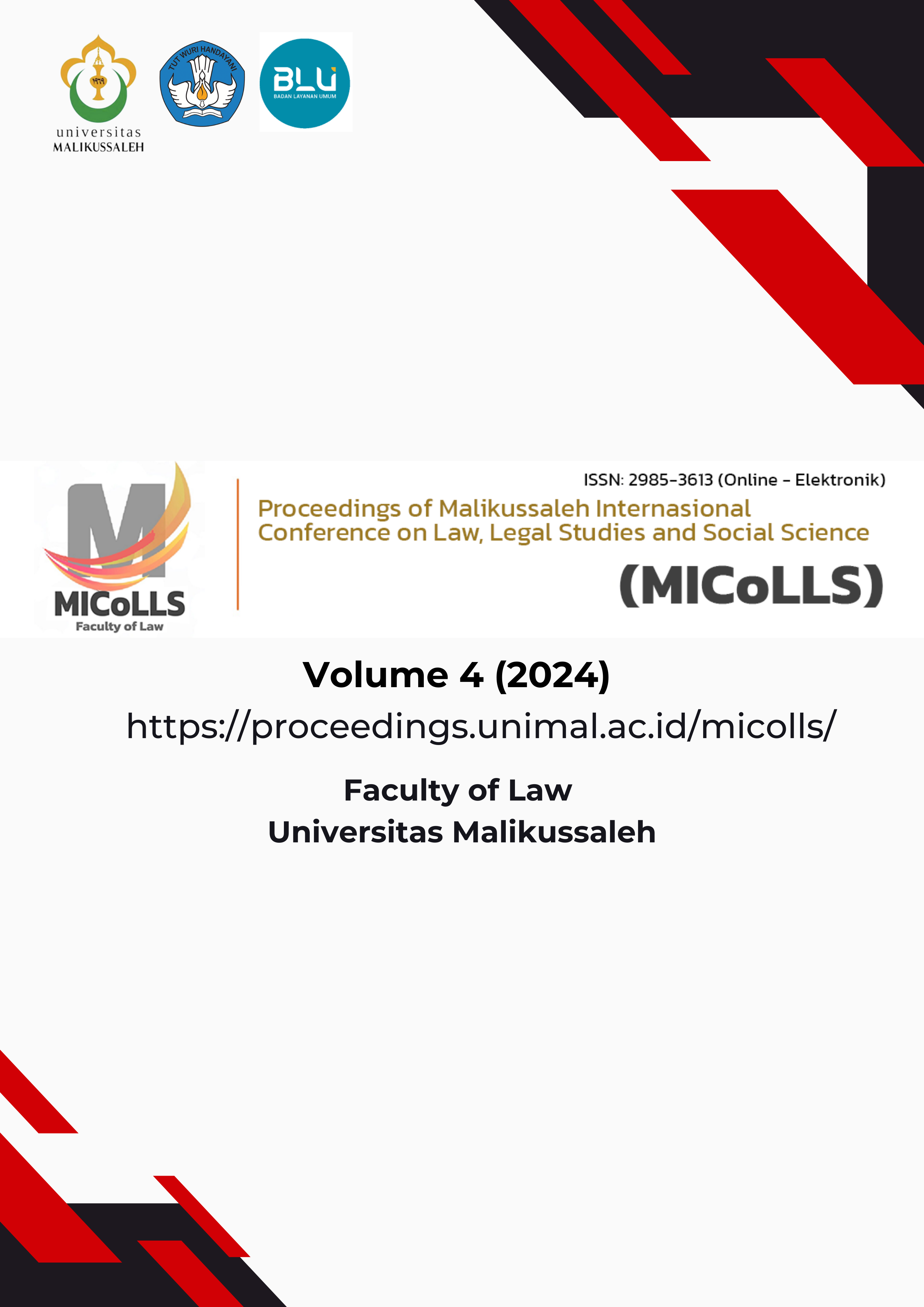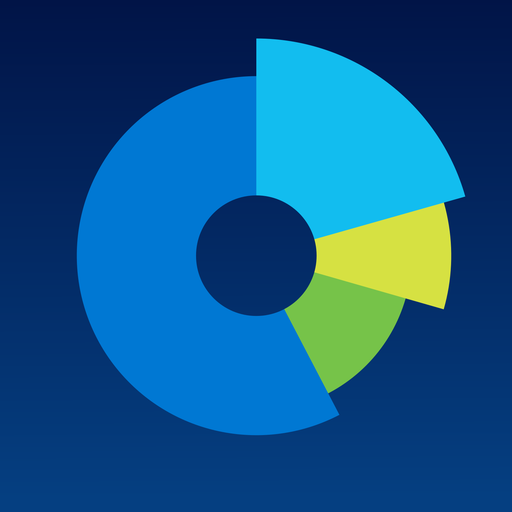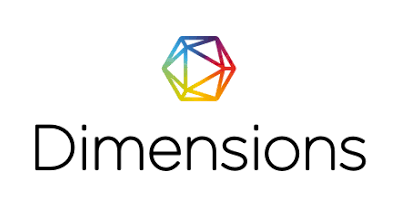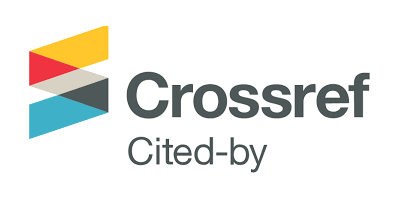Legal Aspects of Money Laundering with Smurfing Mode
Keywords:
Legal Aspects, Criminal Acts, Money Laundering, Mode, SmurfingAbstract
The objective of this study is to explore the legal dimensions of the criminal offense of money laundering, specifically focusing on the smurfing technique. Additionally, it seeks to examine the evidentiary framework applicable to the crime of money laundering as defined by Act No. 8 of 2010 concerning the Penal Procedure for Money Laundering. The advancement technology has introduced various innovative methods in the prosecution of money laundering, one of which is the smurfing technique. This method involves the placement of illicitly obtained funds into the financial system by dividing the money into smaller sums and depositing them into bank accounts to evade detection. The concept of smurfing gained prominence following Judgment No. 62/Pid.Sus/2021/PN Jkt.Utr, which referenced "smurfing" as tactic employed by criminals to obscure the origins of their illicit gains, thus rendering it a significant subject of analysis under Act No. 8 of 2010. 1. This type of legal research is characterized by its normative approach, employing a methodology that focuses on the examination of library resources. It possesses a descriptive quality. The legal documents utilized are derived from primary, secondary, and tertiary sources. The study incorporates two data collection methods: secondary data analysis and qualitative data analysis. The findings indicate that while the smurfing technique is not explicitly defined in Act No. 8 of 2010, its operational phases ranging from initial funding to distribution and eventual withdrawal align with the stipulations outlined in Articles 3, Articles 4, and Articles 5 of the Penal Enforcement Act on Money Laundering.
References
Alfitra. Hukum Pembuktian Dalam Beracara Pidana, Perdata dan Korupsi di Indonesia. Raih Asa Sukses. 2011.
Amin, Rahman. Pengantar Hukum Indonesia. Deepublish, 2019.
Amin, Rahman. Tindak Pidana Pencucian Uang, Deepublish. 2023.
Dirjosisworo. Ruang Lingkup Kriminologi. Rajawali, 1984.
Efendi, Tholib. 2014, Dasar-Dasar Hukum Acara Pidana; Perkembangan dan Pembaharuannya di Indonesia. Setara Press, 2014.
Harahap, M. Yahya. Pembahasan Permasalahan dan Penerapan KUHAP: Pemeriksaan Sidang Pengadilan, Banding, Kasasi dan Peninjauan Kembali, Sinar Grafika, 2006.
Kanter, E.Y. dan S.R Sianturi. Asas-Asas Hukum Pidana di Indonesia dan Penerapannya. Storia Grafika, 2002.
Komisi Pemberantasan Korupsi (KPK), Australia Department of Home Affairs, Pusat Studi Hukum dan Kebijakan (PSHK) dan Australia Indonesia Partnership for Justice (AIPJ). Pedoman Penanganan Tindak Pidana Pencucian Uang dan Pemulihan Aset di Pasar Modal. Perpustakaan Nasional RI, 2018.
Mahsun, Mohamad. Money Laundering. Deepublish, 2023.
Muchsin, Ikhtisar Hukum Indonesia (Cetakan Pertama). Badan Penerbit Iblam. 2005
Remellink, Jan. Hukum Pidana: Komentar Atas Pasal-Pasal Terpenting Dari Kitab Undang-Undang Hukum Pidana Belanda dan Padanannya dalam Kitab Undang-Undang Hukum Pidana Indonesia. Gramedia Pustaka Media, 2023.
Schott, Paul Allan. Reference Guide To Anti-Money Laundering And Combating The Financing Of Terrorism. The World Bank, 2006.
Soetarna, Hendar. Hukum Pembuktian Dalam Acara Pidana. Alumni, 2011.
Yanuar, Muh, Afdal. Tindak Pidana Pencucian Uang dan Perampasan Aset. Setara Press, 2021.
Law Number 8 Of 1981 On Kitab Undang-Undang Hukum Acara Pidana.
Law Number 8 Of 2010 On Countermeasure And Eradication Of Money Laundering.
Kurniawan, Iwan. “Perkembangan Tindak Pidana Pencucian Uang (Money Laundering) Dan Dampaknya Terhadap Sektor Ekonomi dan Bisnis”, Journal of Legal Studies, 3, No. 1 (2012). DOI: http://dx.doi.org/10.30652/jih.v3 i1.1037.
Pribadi, Insan. “Legalitas Alat Bukti Elektronik Dalam Sistem Peradilan Pidana”, Jurnal Lex Rennaisance, No. 1 Vol.1 (2018). DOI: https://doi.org/10.20885 /jlr.vol3.iss 1.art4.
Welling, Sarah N. “Smurfs, Money Laundering and the Federal Criminal Law: The Crime of Structuring Transactions”, University of Kentucky Law Faculty Articles, Vol. 41 No. 3 (1989). DOI: https://scholarship.law.ufl.Edu/flr/vol 41/iss2/3.
Immunebytes. 20 December 2023, Use of Smufing in Crypto Laundering, https://www.imm unebytes.com/blog/use-of-smurfing-in-crypto-laundering/.
Rika, Anggraeni. “OJK Beberkan 10 Modus Money Laundering, Apa saja?”, Finansial, 20 July 2022,https://finansial.bisnis.com/read/20220729/90/1560868/ojk-beberkan-1 0-modus-money-laundering apa-saja
Sovia, Hasanah. “Arti Oogmerk Dalam Tindak Pidana”, Hukum Online, 4 June 2018, https://www.hukumonline.com/klinik/a/arti-ioogmerk-i-dalam-tindak-pidanalt5 afb96cb1 5384/.
Downloads
Published
Issue
Section
License
Copyright (c) 2025 Agil Faiz, Yusrizal Yusrizal, Hadi Iskandar

This work is licensed under a Creative Commons Attribution-ShareAlike 4.0 International License.
Authors retain the copyright and grant the proceeding the right of first publication. This work is licensed under a Creative Commons Attribution-ShareAlike 4.0 that allows others to share the work with an acknowledgement of the Creative Commons Attribution-ShareAlike 4.0 that allows others to share work with an acknowledgement of the works authorship and initial publication in this proceeding.
All articles in this proceeding may be disseminated by listing valid sources, and the article's title should not be omitted. The content of the article is liable to the author.
Authors are able to enter into separate, additional contractual arrangements for the non-exclusive distribution of the proceeding's published version of the work (e.g., post it to an institutional repository or publish it in a book), with an acknowledgement of its initial publication in this proceeding.
Authors are permitted and encouraged to post their work online (e.g., in institutional repositories or on their website) before and during the submission process, as it can lead to productive exchanges and earlier and greater citation of published work.
In the dissemination of articles, the author must declare the Proceedings of Malikussaleh International Conference on Law, Legal Studies and Social Science (MICoLLS) as the first party to publish the article.






